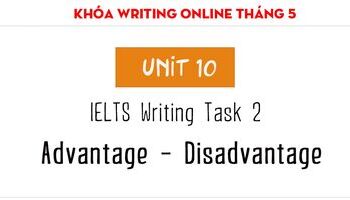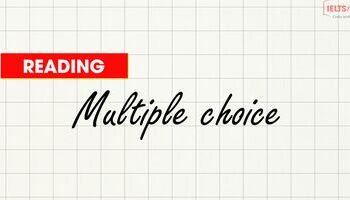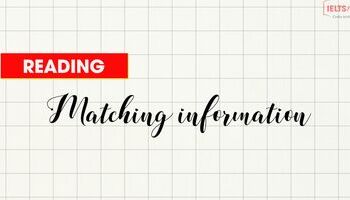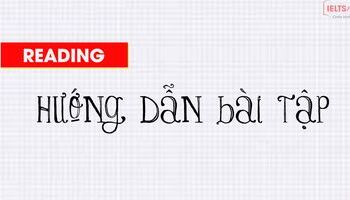Các bạn ơi, chúng ta hãy cùng nhau tìm hiểu về dạng bài Advantages - Disadvantages thuộc Task 2 ngay hôm nay nhé. Bài học hôm nay sẽ giúp bạn gỡ rối sự khó khăn khi gặp dạng bài này nha.
Về bài trước, các bạn xem lại dạng bài: Dạng bài Problem - Solution.
Video bài giảng
Kiến thức chi tiết
Các câu hỏi thuộc dạng bài Advantages & Disadvantages thường sẽ nêu ra ý kiến và yêu cầu người viết phải đưa nhận xét, quan điểm của mình về mặt tích cực (advanatages) và tiêu cực (disadvantages) của ý kiến đó.
Tuy nhiên dạng bài này lại có 3 kiểu câu hỏi khác nhau và mỗi dạng câu hỏi lại có cách triển khai ý trả lời khác nhau.
3 kiểu câu hỏi thường gặp
KIỂU 1
Đề bài: In some countries young people are encouraged to work or travel for a year between finishing high school and starting university studies. Discuss the advantages and disadvantages for young people who decided to do this.
Kiểu câu hỏi này yêu cầu người viết thảo luận về mặt tích cực và tiêu cực của vấn đề. Chúng ta không phải đưa ra ý kiến của bản thân hay phải nêu rõ mặt nào tốt hay không tốt.
Đối với kiểu câu hỏi này, người viết chỉ cần chia hai đoạn thân bài, lần lượt phân tích mặt tích cực và tiêu cực là xong.
KIỂU 2
Đề bài: Some experts believe that it is better for children to begin learning a foreign language at primary schools rather than secondary school. Do the advantages of this outweigh the disadvantages?
Khác với kiểu đầu tiên, kiểu câu hỏi này đòi hỏi chúng ta trả lời mặt tích cực có nhiều hơn mặt tiêu cực hay không. Ở đây ta không nói về so sánh số lượng mà chúng ta sẽ so sánh dựa trên ảnh hưởng, tác động chung của vấn đề. Ví dụ, có nhiều lợi ích nếu du lịch bằng máy bay tư nhân, nhưng có một nhược điểm lớn đó là chi phí quá lớn, tuy nhiên riêng nhược điểm này đã lớn hơn các ưu điểm cộng lại.
Trong ví dụ này, chúng ta sẽ phải nói rõ mặt tích cực hay tiêu cực mạnh hơn và điều này cũng sẽ ảnh hưởng đến cấu trúc bài viết. Nếu bạn chọn viết về mặt tích cực thì bạn cần nêu rõ lý do vì sao cũng như phải thể hiện rõ ý kiến của mình trong câu Thesis Statement.Khác với kiểu đầu tiên, kiểu câu hỏi này đòi hỏi chúng ta trả lời mặt tích cực có nhiều hơn mặt tiêu cực hay không. Ở đây ta không nói về so sánh số lượng mà chúng ta sẽ so sánh dựa trên ảnh hưởng, tác động chung của vấn đề. Ví dụ, có nhiều lợi ích nếu du lịch bằng máy bay tư nhân, nhưng có một nhược điểm lớn đó là chi phí quá lớn, tuy nhiên riêng nhược điểm này đã lớn hơn các ưu điểm cộng lại.
KIỂU 3
Đề bài: Computers are becoming an essential part of school lessons. Discuss the advantages and disadvantages and give your own opinion
Đối với kiểu bài này, chúng ta sẽ phải thảo luận và nêu ý kiến của mình trong bài viết. Bài viết sẽ bao gồm các đoạn văn thể hiện mặt tích cực, tiêu cực và câu Thesis Statement cũng cần được làm nổi bật.
Cấu trúc làm bài chi tiết
Phân tích chung
1. General structure
Introduction:
- Paraphrase the provided opinion/trend/fact
- Thesis statement: clearly state the writer’s viewpoint (advantages hay disadvantages lớn hơn)
2 Body paragraphs:
- 2 đoạn body lần lượt nói về Advantages và Disadvantages theo trình tự Thừa nhận - Phản biện
Cái nào nhỏ hơn nằm ở Body 1, lớn hơn nằm ở Body 2
Conclusion:
Summarize the main ideas
2. Brainstorm
Đề bài: In the past, most people worked for small businesses, while more people now work for large businesses.
What are the advantages and disadvantages of working for large businesses?
Advantages
Higher income
Other additional benefits
Disadvantages
More stress
- Ý mà người viết ko đồng ý: drawback, which is more stress.
=> ý của Body 1 – Thừa nhận “It is understandable why a number of people believe that…”
- Người viết nghiêng về: advantages of this trend, particularly higher income and other additional benefits
=> các ý của Body 2 – Phản biện
Câu Thesis statement: The advantages of this trend, particularly higher income and other additional benefits, overshadow its drawback, which is having more stress.
3. Sample answer
In the past, the majority of people were employees of small companies, while nowadays more people choose working for big companies. From my perspective, the advantages of this trend, particularly higher income and other additional benefits, can overshadow its drawback which is pressure.
On the one hand, it is understandable why employees of large companies are usually under great pressure, which is the major drawback. Working for large enterprises requires people to perform many tasks and complete them before deadlines. Should they fail, they can be punished by their manager or even fired, so they are constantly under tension, especially for beginners. For example, my cousin works for Vingroup, one of the largest enterprises in Vietnam. At the beginning, she usually worked overtime at weekends or at night, so she did not have enough time for relaxation. However, the pressure has taught her to manage her time and work more effectively now.
Nevertheless, from my viewpoint, the advantages of working in a large company outweigh the drawbacks. The first benefit is higher income because large enterprises usually have strong financial resources. As a result, they are willing to offer high salaries to attract experienced and hard-working employees. Moreover, working in a big company also brings many other additional benefits such as working conditions, insurance, and relationships. For instance, in a large company, the office will be equipped with good facilities namely air conditioners, modern computers, and stable Internet connection. Most big enterprises organize summer trips for employees to de-stress and create connections between members in the organization.
In conclusion, working for large businesses has more advantages, which are high salary and other additional benefits, than drawbacks, particularly stress. (278w, 7.0)
4. Useful structures
Admission and Counter (Thừa nhận và Phản biện)
- It is understandable why someone believe that + clause: thừa nhận và paraphrase
- However/Nevertheless, the [advantages/benefits/pros] are greater than the aforementioned [disadvantages/drawbacks/cons] of sth: đưa ra ý kiến ngược lại để phản biện
Present and Explain ideas (Trình bày và Phát triển ý tưởng)
- For once, First, To begin with: đầu tiên (main idea thứ nhất)
- Moreover, Furthermore: hơn thế nữa (main idea tiếp theo)
- Therefore, As a result: vì vậy (kết quả)
- However, Nevertheless: ngược lại (đưa ra idea trái ngược)
Sắp xếp cấu trúc theo từng kiểu bài:
KIỂU 1
Introduction
Sentence 1- Paraphrase question
Sentence 2- Outline sentence
Supporting Paragraph 1 (Advantages)
Sentence 3- Topic sentence (Advantage 1)
Sentence 4- Explain how this is an advantage
Sentence 5- Example
Supporting Paragraph 2 (Disadvantages)
Sentence 6- Topic sentence (Disadvantage 1)
Sentence 7- Explain how this is a disadvantage
Sentence 8- Example
Conclusion
Sentence 9- Summary of main points
Sample Answer:
Đề bài: In some countries young people are encouraged to work or travel for a year between finishing high school and starting university studies. Discuss the advantages and disadvantages for young people who decided to do this.
Bài mẫu: Before embarking on college many young people are advised that a year working or travelling may be a good option. This essay will suggest that saving money is the biggest advantage of this and a reduced motivation to study is the primary disadvantage.
Third level education is very expensive and lots of students decide to work for 12 months and save up money before they begin their studies. This allows them to pay for their living costs, tuition fees and accommodation and focus on their studies, rather than struggle financially or have to get a part time job on top of their academic work. The Times recently reported that the average student at a UK university requires over $12,000 per annum just to survive and many drop out because they cannot afford to stay.
Despite these advantages, many students often get used to working or travelling and don’t want to return to a life of study after a year off. This short term view can cause some to bypass university altogether and go straight into a job that is beneath their capabilities or may not offer the same prospects their future career might have done. For instance, a recent survey by the British Government found that 26% of students who take a gap-year never enter tertiary education.
In conclusion, taking a break from studies can be advantageous if it allows people to gather up savings, however, they should also be careful that it does not lead to disillusionment with education altogether.
(252 words) (Nguồn: ieltsadvantage.com)
KIỂU 2
Introduction
Sentence 1- Paraphrase question
Sentence 2- Thesis statement (state which one outweighs the other)
Sentence 3- Outline sentence
Main Body Paragraph 1 (Stronger Side)
Sentence 4- Topic Sentence
Sentence 5- Explain why it is strong
Sentence 6- Example
Sentence 7- Topic Sentence
Sentence 8- Explain why it is strong
Sentence 9- Example
Main Body Paragraph 2 (Weaker Side)
Sentence 10- Topic Sentence
Sentence 11- Explain why it is not strong
Sentence 12- Example
Conclusion
Sentence 13- Summary of main points and restate position.
Sample Answer:
Đề bài: Some experts believe that it is better for children to begin learning a foreign language at primary schools rather than secondary school. Do the advantages of this outweigh the disadvantages?
Bài mẫu: Some authorities think that it is more favorable for pupils to begin studying languages at primary school instead of secondary school. This essay will argue that the advantages of this outweigh the drawbacks. The essay will first demonstrate that the earlier someone learns an additional language the more likely they are to master it and that it brings added cognitive benefits, followed by an analysis of how the primary disadvantage, namely confusion with their native tongue, is not valid.
The main reason to start kids off with foreign languages early is that this increases the likelihood they will achieve fluency in adulthood. That is to say that they will have far more years to perfect their skills and it will seem perfectly normal to speak bilingually. For example, in countries such as Holland and Norway where English is taught from a very young age, more than 95% of adults speak it at an advanced level. Learning a second language also helps to improve overall cognitive abilities. In other words it benefits the overall development of a child’s brain. A recent survey by Cambridge University found that children who studied a new language before the age of 5 were significantly more likely to score higher in Mathematics and Science.
Those opposed to this say that it causes the child to become confused between their mother tongue and the other language. However, there is actually no evidence to support this view and children from bilingual families do just as well in both languages. My own son was brought up speaking both Vietnamese and English and outperforms most of his classmates in both.
On balance, the fact that early foreign language learning leads to higher fluency and improved brain function clearly outweighs the flawed argument that it impairs uptake of native languages.
(299 words) (Nguồn: ieltsadvantage.com)
KIỂU 3
Introduction
Sentence 1- Paraphrase question
Sentence 2- Thesis statement (your opinion)
Sentence 3- Outline sentence
Main Body Paragraph 1 (Advantages)
Sentence 4- Topic Sentence
Sentence 5- Explain
Sentence 6- Example
Main Body Paragraph 2 (Disadvantages)
Sentence 7- Topic Sentence
Sentence 8- Explain
Sentence 9- Example
Main Body Paragraph 3 (Opinion)
Sentence 10- Explain opinion
Sentence 11- Explain or give example
Conclusion
Sentence 12 – Summary of main points
Sample Answer:
Đề bài: Computers are becoming an essential part of education. Discuss the advantages and disadvantages and give your own opinion.
Bài mẫu: Information technology is becoming a ubiquitous part of learning. This essay will show that this is a welcome development and can enhance educational practice. It will first suggest that the instant availability of huge amounts of information is the primary advantage, followed by a discussion of how it can sometimes lead to plagiarism.
The main benefit computers bring to learners is easy access to vast amounts resources. Learners were once limited to the books they had and the knowledge of their teacher, now they can learn about anything they choose at the touch of a button. Google is a prime example, because it allows people to easily search for whatever they are looking for quickly and accurately.
One possible drawback is that using the internet to complete academic work can sometimes lead to pupils copying articles from the internet. As a result, students do not have to think about their tasks and learn very little. The Sunday Times recently reported that 72% of college graduates in the UK admitted to copying and pasting Wikipedia articles at least once.
Overall, it is a very positive development because most students will take advantage of the power of the information superhighway to enhance their studies, rather than using it to cheat. For example, in 2005 Cambridge University found that students who regularly used a computer were 26% more likely to get a first-class degree than those who did not.
In conclusion, the web has provided a gateway to knowledge unlike anything seen before and although it can sometimes lead to a few taking the easy route and plagiarising, it is a very positive step in the evolution of education.
(278 words) (Nguồn: ieltsadvantage.com)
Xem thêm bài viết hay khác:
- Cách viết IELTS Writing Task 2 theo dạng bài
- Tổng hợp 50 bài mẫu IELTS WRITING – TASK 2
Đặc biệt là ngay trong tháng này thì IELTS Fighter hiện đang có chương trình ưu đãi học phí siêu hấp dẫn cho các bạn học viên mới, đừng bỏ qua nhé:





